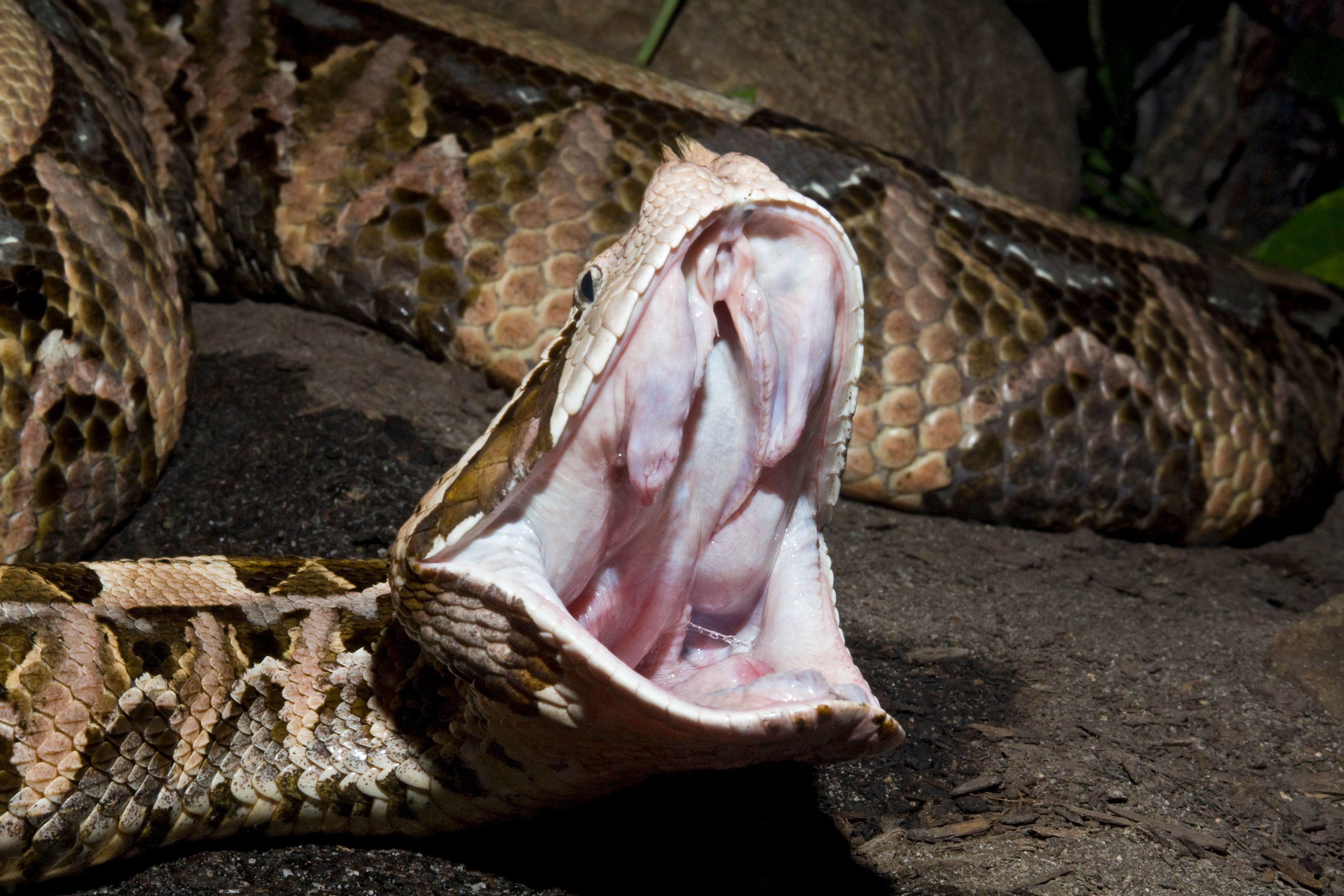Man lucky to be alive after ‘worst’ bite from venomous snake
Victim lost two fingers but is back to work and ‘living a normal life’

A man is lucky to be alive after doctors say he was bitten by one of the world’s most venomous snakes and needed 44 doses of antivenom to survive.
The man, who has not been identified, lost two fingers after he was bitten by a Gaboon viper that he kept at his home in Wilmington, North Carolina.
Dr Jarrett Lark and Myrtle Beach Fire Department paramedic Thad Bowman, who works part-time at North Myrtle Beach’s Alligator Adventure in South Carolina, helped save the man’s life when the alarm was raised, despite being a state away.
The pair have extensive knowledge and experience of treating venomous bites and have worked treating patients across the Carolinas.
Mr Bowman said he received a call from a hospital following the bite and sent anti-venom from Alligator Adventure to the hospital.
“We’ve dealt with exotic bites in the past, but nothing to this extent,” Mr Bowman told WMBF News.
The huge number of anti-venom doses is the most that either has ever seen a patient require.
And they even heard from a snake bite expert in Africa, who was shocked the victim had actually survived the bite.
“He’s thinking from what he’s seen in the field there and speaking with some other experts in Africa, this is going to be the worst Gaboon bite that’s ever survived,” Mr Bowman said.
He said that the bite cost the victim a “couple of fingers”, but that the man is “back to working two jobs” and is “living a normal life”.
Gaboon vipers are the largest vipers in Africa, weighing more than 45 pounds and reaching lengths of more than 6 feet, according to the Smithsonian Institution’s National Zoo.
“Gaboon vipers have a placid nature and very rarely bite humans. Most bites occur when the snake is stepped on before it has an opportunity to get away. If harassed, it will raise the upper part of its body and hiss in threat before actually striking,” according to the Smithsonian.
Subscribe to Independent Premium to bookmark this article
Want to bookmark your favourite articles and stories to read or reference later? Start your Independent Premium subscription today.

Join our commenting forum
Join thought-provoking conversations, follow other Independent readers and see their replies